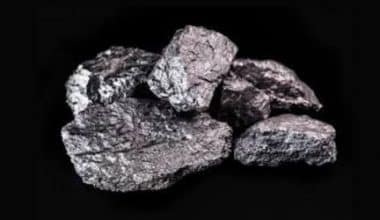Compound interest is possibly the best investing method one can use, independent of what they actually invest in, as you have probably heard a lot about it while considering a 401(k) investment. Compound interest is all about time, and the more of it you have, the greater the reward. Hence, if you’re a short-term investor or want to maintain a high level of liquidity, this method is probably not the ideal choice for you. In this post, we will expose you to more daily and high compound interest investments in 2023 and other things you need to know.
Read also: 17 Good Investments Right Now 2023 (+ Free Tips)
Compound Interest Investments
The interest you earn on interest is known as compound interest. Simply put, after making an initial investment, you will earn a certain rate of return your first year, which will then increase yearly based on the interest rate received.
How Compound Interest Works
The interest you receive that is compounded on:
- the primary, or the sum you deposited originally
- interest that you have previously accrued
For instance, if you have a savings account, you will receive interest on both your initial funds and any prior interest. On your interest, you receive interest. Simple interest is distinct from this. At the end of the period, simple interest is solely paid on the principal. Simple interest is typically paid on term deposits.
Compound Interest Investments Calculator
A certain parameter for an investment plan can be calculated using the investment calculator. The requested parameter is represented by the tabs. Click the “Return Rate” tab, for instance, to determine the return rate required to achieve an investment target given a set of inputs. The act of investing involves employing money to generate additional money. One of many distinct variables relating to investments with a set rate of return can be determined with the use of the investment calculator.
There are four essential components that go into each average financial investment.
#1. Return Rate
For many investors, the return rate is what matters most. Although it looks to be a simple percentage, it is actually the hard, cold statistic that is used to compare the allure of various types of financial investments.
#2. Starting Amount
This is often known as the principal, is the sum that is immediately visible at the time the investment is made. In terms of actual investing, it may be a sizable sum saved up for a property, an inheritance, or the cost of a significant amount of gold.
#3. End Amount
The targeted sum at the conclusion of the investment’s life is known as the end amount.
#4. Investment Length
Investment life is measured by the investment’s length. Due to the uncertain future, investments are typically riskier the longer they are held. Typically, the longer an investment is held, the more return is compounded, and the bigger the rewards.
#5. Additional Contribution
Investments are possible without additional contributions, sometimes known as annuity payments in financial jargon. However, any further contributions made over the course of an investment will increase the accrued return and the final value.
Various Investment Types
Almost every investment opportunity that can be reduced to the aforementioned elements can be employed with our investment calculator. The list of common investments is shown below. There are many more investment choices than those that were provided.
#1. CDs
A certificate of deposit, or CD, which is offered by most banks, is a straightforward illustration of a product category of investment that may be utilized with the calculator. An investment with low risk is a CD. The Federal Deposit Insurance Corporation (FDIC), a branch of the American government, insures the majority of banks in the country. This means that, up to a specific sum, the FDIC will guarantee the CD.
#2. Bonds
Risk is a crucial consideration when investing in bonds. Generally speaking, higher risks require higher premiums. Purchasing, for instance, bonds or debt from some businesses that have been classified as having a high level of risk by the organizations that assess the risk of corporate debt
#3. Stocks
Stocks and equity are common investment types. They are among the most significant investment types for both institutional and private investors, despite not being fixed-interest investments. A stock is a portion of ownership in a firm or a share. Shareholders receive money in the form of dividends for as long as the shares are kept, allowing a partial owner of a public firm to participate in its profits.
#4. Real Estate
Real estate is another preferred investment category. Purchasing homes or apartments is a common real estate investing strategy. The owner can then decide whether to sell them or rent them out in the interim with the possibility of selling them later on at a more advantageous moment.
Best Daily Compound Interest Investments
These are some of the greatest compound interest accounts and investments to hold in them if you’re seeking a place to invest your cash and generate compound interest. Below are some best compound interest investments you can make daily:
#1. Daily Compound Interest Investments: Certificates of Deposit
Most banks and credit unions provide certificates of deposit (CDs), which are simple to open and comprehend. In the US, CDs are insured up to $250,000 and are almost risk-free. Similar to savings accounts, they are another type of savings instrument, but they have longer-term obligations that can last anywhere between three months and five years.
The “term length” of a CD refers to the duration of the loan to the bank; longer-term lengths often have higher interest rates. Similar to any asset that pays interest, the longer the term or commitment, the higher the interest rate and return you can anticipate in exchange for a longer period of time without access to your money.
#2. Daily Compound Interest Investments: High-Yield Savings Account
Another choice for short-term investments is high-yield savings accounts. Although these accounts have higher interest rates than conventional savings accounts, they often have the same liquidity as cash deposits. The fact that interest rates can alter is one drawback of a high-interest savings account. Be aware that even if you first receive the best interest rate offer available, your rate may decrease. Fees are yet another concern with high-yield savings accounts. For using specific bank account features, some banks will charge a monthly maintenance fee or additional expenses. Before registering for an account, make sure you are aware of all the expenses involved.
In the end, high-yield savings accounts are a terrific method to increase your return on your savings by saving money at a higher rate than you would with a standard savings account. They’re a wonderful choice for those who don’t want to take on as much risk as they would with other investments, because to the combination of their high liquidity and low risk.
#3. Daily Compound Interest Investments: Money Market Accounts
An account type known as a money market account (MMA) gives a greater interest rate than a typical savings account. In comparison to other short-term assets like certificates of deposit or treasury bills, they also provide better liquidity. The fact that MMA interest rates are often lower than those of other investment options is a drawback of MMAs. Thus, they might not produce considerable compound interest like other investment options on this list. The minimum balance needed to keep the account open is another issue to be aware of with MMAs.
Some MMAs have checkbooks, which can be a great method to swiftly access your money if necessary. A major distinction between an MMA and a high-yield savings account is the checkbooks. In the end, an MMA is an excellent choice for those who want to earn more interest than what regular savings accounts offer while still having access to their money in case of emergency.
#4. Daily Compound Interest Investments: Individual Stocks
When you purchase stocks, you own a portion of a firm that, ideally, will grow in value over time. This effectively means that your investment increases together with the firm. Certain stocks may entitle you to dividend payments from the company, providing you with a quick return on your investment. Frequently, you have the option to have those dividends reinvest themselves automatically, allowing your investment to expand over time. The value of a stock cannot be guaranteed to rise. Even in times of economic instability, stock investments can be erratic, but they have traditionally been regarded as a solid alternative for investors. Using an app that offers free stocks to new customers is a great place to start if you want to start investing in stocks.
#5. Daily Compound Interest Investments: Exchanged-Traded Funds (ETFs)
A type of investment known as an ETF follows an index, such as the S&P 500. ETFs track changes in the index’s value, which is reflected in the underlying value of your ETF. During regular market hours, ETFs can be bought and sold on the stock market, and many brokerages provide commission-free ETFs. ETFs are a well-liked investing option since they provide diversification and allow for quick buys and sells. The opportunity to invest in ETFs automatically when you make contributions to your brokerage account is provided by robo-advisors. These investing apps manage every aspect of your investing. You provide information on your age, preferences, risk tolerance, financial objectives, and other factors.
High Compound Interest Investments 2023
Compound interest serves as the next best thing to free money because it doesn’t grow on trees. There is undoubtedly a compounding asset out there that will enable you to achieve your financial goals, whether it be a savings account, bonds, REITs, or dividend stock. To help you build your money, we looked at investments with significant compound interest. Below are some high compound interest investments to get in 2023:
#1. Compound Interest Investments 2023: Money Market Accounts
One of the best compound interest investments for realizing your savings goals is a money market account (MMA). These accounts have interest rates that range from modestly low (0.27%) to generously high (4.39%). It translates to more money in your pocket with little to no work and risk. Saving money has never been simpler than it is with a money market account. The days of receiving meager returns on your savings balance are long gone. You can benefit from increased interest rates using MMAs instead of locking your money up in long-term investments or stuffing it under your mattress.
#2. Compound Interest Investments 2023: High-yield Savings Account
Due to the regular returns they provide, high-yield savings accounts can help you save more for items like vacations and down payments on homes. High-yield savings accounts grow at an average yearly rate of 3% rather than leaving your money on the sidelines and losing value due to inflation. An excellent place to keep money in between short-term investments is a high-yield savings account. These accounts can offer comparable liquidity and safety with greater interest rates than typical savings accounts—up to 5.03%. Also, there is frequently no minimum balance needed.
#3. Compound Interest Investments 2023: Mutual Funds
During the Roaring Twenties, when mutual funds first became popular, they have gone a long way. Similar to how a group of people pools their money to buy a gift for a friend’s birthday, they were created to allow investors to purchase securities instead of gifts. Consider mutual funds as a financial counselor that manages all of your investments. Mutual funds are a great place for beginners to start with compound interest because they provide professional oversight on investments. There could be some costs, but given that mutual funds have a history of providing amazing long-term returns, they might be worthwhile.
#4. Compound Interest Investments 2023: Bonds and Bond Funds
The original investments are bonds and bond funds; for centuries, they have given investors a reliable income stream as they sought to balance the dangers associated with the stock market. Treasury securities, which allow you to lend money to the government and get interest payments until the bond matures, are the most well-liked bonds. Bonds have long been used by both businesses and governments to finance initiatives. You can invest in exchange-traded funds (ETFs) that hold treasury securities as their underlying assets or purchase treasury securities directly from the US government. Bonds and bond funds are the way to go if you’re seeking a safe investment.
#5. Compound Interest Investments 2023: Dividend Stocks
Stocks that pay dividends have grown to be a popular option to supplement your income. Investors are continually looking to profit from stocks that pay you to own them because the S&P 500 index normally ranges between 2% and 5% in dividend yield. Stocks that pay dividends can be a great source of passive income if they are handled and reinvested properly. The beauty of these stocks is that you can still profit from dividends even if the share price declines.
Knowing about the dangers and possibilities related to the firm is essential when investing in companies that pay dividends. You can quickly master dividend investing and maximize profits by doing some research and due diligence on your stock picks.
#6. Compound Interest Investments 2023: REITs
Real estate investment trusts, or REITs, are a fantastic way to invest money. REITs have greatly exceeded the S&P 500 since Congress first established them in 1960, with an average annual return of 18.8% over the ensuing decades. Investors also benefit from decreased volatility with REITs, as some of them are just half as unpredictable as the stock market. Equity REITs and mortgage REITs are the two main categories of REITs. Equity REITs manage real estate assets that they directly possess an interest in. Similar to a conventional landlord, they manage the property and collect rent. On the other hand, mortgage REITs use their assets to hold obligations back and collect payments.
What Is the Best Investment for Compound Interest Return?
High-yield savings accounts, certificates of deposit, bonds or bond funds, money market accounts, real estate investment trusts (REITs), and dividend-paying equities are among the products that offer the best compound interest rates.
What Banks Give Compound Interest?
Compound interest is offered by all banks. The amount of time it will take for your money to double is 72 years at the current interest rate.
Which Bank Gives 7% Interest on Savings Account?
Interest rates range from 6% to 7% at Unity Small Finance Bank for different amounts.
How Do I Become a Millionaire Interest Compound?
By taking advantage of compounding and beginning to save your money as soon as possible, you can become a billionaire the simplest manner possible. Interest accrues more quickly the earlier you start saving.
Related Posts
- COMPOUND INTEREST ACCOUNTS: 15 Best Accounts To Open in 2023 (Updated)
- SIMPLE AND COMPOUND INTEREST: Difference, Formula and Examples
- COMPOUND INTEREST: Meaning, Investment, Formula & Calculation
- MONEY INVESTMENTS: Best 2023 Options for Beginners & Pros (Updated)






